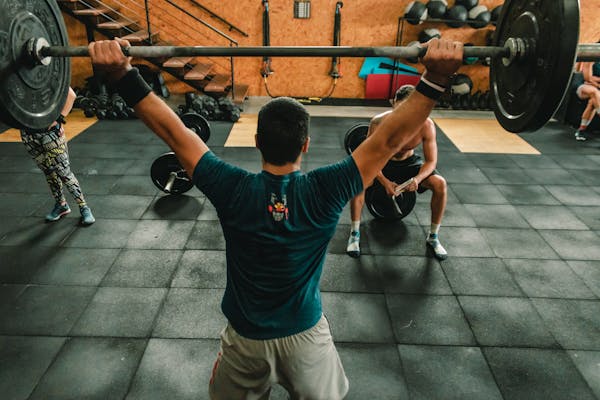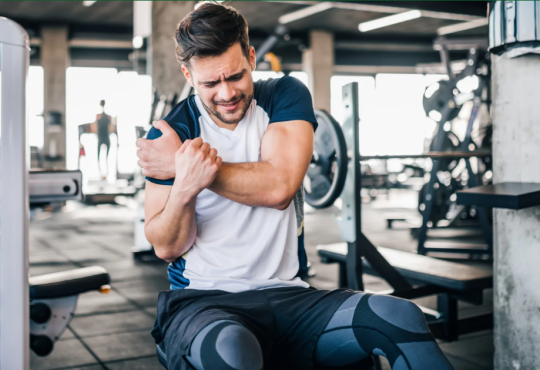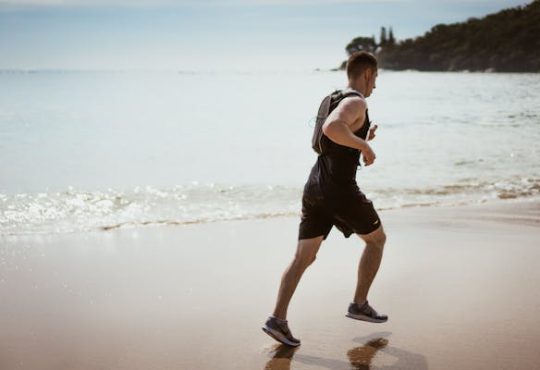Building muscle is a goal pursued by millions of fitness enthusiasts, athletes, and everyday individuals aiming to improve their health, aesthetics, or performance. Muscle-building, or hypertrophy, involves stimulating the muscle fibers through resistance training, followed by recovery periods where the muscles repair and grow stronger. While the journey may seem simple in concept, the science behind selecting the best exercises for muscle building is intricate. There are numerous factors involved, including exercise selection, frequency, intensity, volume, and the types of exercises performed.

In this comprehensive guide, we will dive into the best exercises for muscle building, how to perform them correctly, and how they contribute to overall muscle growth. By understanding the mechanics of these exercises, you can effectively craft a workout routine that maximizes muscle hypertrophy.
Understanding Muscle Building: The Basics of Hypertrophy
Before we explore specific exercises, it is essential to grasp how muscles grow. The process of hypertrophy involves three main mechanisms:
- Mechanical Tension: This refers to the tension placed on a muscle during resistance exercises. When you lift weights, your muscles contract, which creates tension. Heavier weights and longer durations of contraction can increase mechanical tension, which leads to muscle growth.
- Muscle Damage: When you engage in resistance training, small microtears occur in the muscle fibers. During recovery, these fibers are repaired, becoming larger and stronger. Muscle damage is a natural part of the muscle-building process and is most effectively achieved through compound movements.
- Metabolic Stress: Also known as “the pump,” metabolic stress occurs when your muscles experience the accumulation of metabolites, such as lactate, during high-rep or time-under-tension exercises. This stress triggers growth signaling pathways that contribute to hypertrophy.
To maximize muscle growth, you need to incorporate a variety of exercises that target these mechanisms. Let’s now explore the best exercises for muscle building and how they cater to these hypertrophy triggers.
The Best Exercises for Muscle Building
When it comes to building muscle, compound exercises take the crown. Compound exercises involve multiple joints and large muscle groups, allowing you to lift heavier weights and stimulate more muscle fibers. However, isolation exercises, which target individual muscles, also play a key role in shaping and defining muscles.
Below, we break down the best exercises for each major muscle group. These exercises, when done with proper form and progressive overload, will help you achieve optimal muscle growth.
1. Best Exercises for Chest
A. Barbell Bench Press
The barbell bench press is a fundamental compound exercise for building chest muscles. It engages the pectoralis major, triceps, and deltoids, making it an efficient movement for upper body development.
- How to Perform:
- Lie flat on a bench with your feet firmly on the ground.
- Grip the bar slightly wider than shoulder-width.
- Lower the bar slowly to your chest while keeping your elbows at a 45-degree angle.
- Press the bar back up to the starting position.
- Why It’s Effective: The bench press allows you to lift heavy weights, providing significant mechanical tension and muscle damage to the chest muscles. It is an essential exercise for anyone looking to build a thick, powerful chest.
B. Dumbbell Flyes
Dumbbell flyes target the pectoralis major from a different angle than pressing movements, making it an excellent isolation exercise for chest development.
- How to Perform:
- Lie on a bench with a dumbbell in each hand, arms extended above your chest.
- Slowly lower the dumbbells out to your sides in a wide arc, keeping a slight bend in your elbows.
- Bring the weights back to the starting position while squeezing your chest muscles.
- Why It’s Effective: Dumbbell flyes create a deep stretch in the chest muscles, contributing to muscle damage and hypertrophy. They are perfect for shaping and defining the pectoral muscles after heavier compound movements like the bench press.
2. Best Exercises for Back
A. Deadlift
The deadlift is a full-body compound movement that primarily targets the muscles of the posterior chain, including the latissimus dorsi, trapezius, and spinal erectors.
- How to Perform:
- Stand with your feet hip-width apart and the barbell over the middle of your feet.
- Grip the barbell with your hands slightly wider than shoulder-width.
- Keep your back flat, bend at the hips, and lift the bar off the ground by extending your hips and knees.
- Lower the bar back to the ground in a controlled manner.
- Why It’s Effective: Deadlifts allow you to lift maximal loads, which contributes to substantial mechanical tension and muscle damage, especially in the back. It’s one of the best exercises for muscle building, as it engages a wide array of muscles and strengthens the posterior chain.
B. Pull-Ups
Pull-ups are a bodyweight exercise that targets the upper back and biceps. They are one of the best bodyweight exercises for overall back development.
- How to Perform:
- Grip a pull-up bar with your hands slightly wider than shoulder-width, palms facing away from you.
- Hang from the bar with your arms fully extended.
- Pull your body up until your chin is above the bar, then lower yourself back down.
- Why It’s Effective: Pull-ups are great for building muscle because they provide an intense workout for the latissimus dorsi and biceps. The movement also creates metabolic stress, especially when performed for higher reps or with added weight.
3. Best Exercises for Shoulders
A. Overhead Press
The overhead press is a compound exercise that primarily works the deltoids, triceps, and upper chest. It’s essential for building strong, rounded shoulders.
- How to Perform:
- Stand with your feet shoulder-width apart and hold a barbell at shoulder height.
- Press the bar overhead until your arms are fully extended.
- Lower the bar back to the starting position with control.
- Why It’s Effective: The overhead press targets all three heads of the deltoid, creating balanced shoulder development. It’s one of the best exercises for building muscle in the upper body, as it engages multiple joints and muscle groups.
B. Lateral Raises
Lateral raises are an isolation exercise that targets the lateral head of the deltoid, contributing to the width and definition of your shoulders.
- How to Perform:
- Stand with a dumbbell in each hand at your sides.
- With a slight bend in your elbows, raise the dumbbells out to your sides until they reach shoulder height.
- Lower the weights back down with control.
- Why It’s Effective: Lateral raises are perfect for developing the lateral deltoid, which enhances shoulder width and aesthetics. When combined with compound movements, they can significantly improve shoulder shape and symmetry.
4. Best Exercises for Arms
A. Barbell Curl
The barbell curl is a staple bicep exercise that helps build mass in the upper arms. It targets the biceps brachii and the brachialis muscles.
- How to Perform:
- Stand with a barbell in your hands, arms extended and palms facing forward.
- Curl the barbell up toward your chest while keeping your elbows stationary.
- Lower the barbell back down in a controlled manner.
- Why It’s Effective: Barbell curls allow you to overload the biceps with heavy weight, contributing to significant muscle growth. They are among the best exercises for muscle building in the arms.
B. Tricep Dips
Dips are a compound bodyweight exercise that targets the triceps, chest, and shoulders. When performed with a narrow grip, they place more emphasis on the triceps.
- How to Perform:
- Position yourself on parallel bars with your arms extended.
- Lower your body by bending your elbows until your upper arms are parallel to the ground.
- Push yourself back up to the starting position.
- Why It’s Effective: Dips are one of the best exercises for building tricep mass because they allow you to lift your body weight, creating significant tension and muscle damage in the triceps.
5. Best Exercises for Legs
A. Squats
The squat is often referred to as the king of all exercises due to its ability to engage nearly every muscle in the lower body, including the quadriceps, hamstrings, glutes, and calves.
- How to Perform:
- Stand with your feet shoulder-width apart and a barbell resting on your upper back.
- Lower your body by bending your knees and hips until your thighs are parallel to the ground.
- Push through your heels to return to the starting position.
- Why It’s Effective: Squats allow you to lift heavy weights, providing immense mechanical tension to the legs. They are essential for building muscle mass in the lower body and improving overall strength.
B. Romanian Deadlift
The Romanian deadlift is a compound exercise that primarily targets the hamstrings and glutes, making it an excellent movement for developing the posterior chain.
- How to Perform:
- Stand with your feet shoulder-width apart and a barbell in your hands.
- Keep your knees slightly bent and hinge at the hips to lower the barbell down your legs.
- Lift the barbell back up by extending your hips.
- Why It’s Effective: The Romanian deadlift is one of the best exercises for muscle building in the hamstrings and glutes. It provides a deep stretch in the muscle fibers, which helps promote muscle damage and growth.
Maximizing Muscle Growth: Tips for Success
Now that we’ve covered the best exercises for muscle building, it’s crucial to implement them effectively in your workout routine. Here are a few tips to maximize your results:
- Progressive Overload To build muscle, you need to continually challenge your muscles by increasing the weight or resistance over time. This principle, known as progressive overload, ensures that your muscles are consistently exposed to greater stress, leading to growth.
- Volume and Frequency Studies have shown that increasing the volume (sets and reps) and frequency (how often you train a muscle group) can significantly impact muscle hypertrophy. Aim to hit each muscle group at least twice per week with adequate volume for best results.
- Rest and Recovery Muscles don’t grow during your workout—they grow when you rest. Ensure you get plenty of sleep, manage stress, and give your muscles enough recovery time between workouts. Incorporating rest days and alternating muscle groups can prevent overtraining.
- Nutrition Muscle growth requires adequate nutrition, especially protein. Aim to consume around 1.6-2.2 grams of protein per kilogram of body weight per day. Additionally, ensure you’re eating enough calories to support muscle growth, as building muscle in a caloric deficit is challenging.
- Form and Technique Maintaining proper form during exercises is vital to prevent injury and ensure you’re effectively targeting the intended muscle groups. If you’re unsure about your form, consider working with a trainer or watching instructional videos to perfect your technique.
Building muscle is a multifaceted process that requires a combination of effective exercises, proper nutrition, and adequate recovery. By incorporating the best exercises for muscle building—such as squats, deadlifts, bench presses, and pull-ups—you can ensure that you’re working all major muscle groups and promoting hypertrophy. Remember to progressively increase the weight you lift, prioritize good form, and give your body the rest and fuel it needs to grow stronger.





